calsfoundation@cals.org
Bill and Hillary Clinton National Airport
The Bill and Hillary Clinton National Airport (formerly Little Rock National Airport/Adams Field), located two miles east of downtown Little Rock (Pulaski County) on the south side of the Arkansas River, is a mixed-use airport with both commercial and private airplanes, as well as a military presence. It has the largest amount of scheduled commercial service in the state of Arkansas and serves more than two million passengers annually.
Little Rock’s first airport, operated by the U.S. Army Signal Corps, opened in 1917 as the Little Rock Intermediate Air Depot. This small airfield expanded in 1926 due to the growing needs of the 154th Observation Squadron of the Arkansas National Guard. In 1928, the first aircraft manufacturing business arrived on site. This was the first in a long line of manufacturing/aircraft overhaul services at the airfield. In 1930, the citizens of Little Rock purchased the airfield, and American Airways (now American Airlines) started service the following June.
The “Adams Field” portion of the name relates to Captain George Geyer Adams of the 154th Observation Squadron of the Arkansas National Guard; he was killed in the line of duty on September 4, 1937. In addition to his service in the National Guard, Adams was a Little Rock city councilor and a strong advocate for the airport.
At the end of World War I, the airport covered only forty acres; by 2011, it sat on 2,200 acres. The U.S. Department of War assumed control of the airport for the duration of World War II and subsequently returned it to the city at the conclusion of the war.
In 1953, a major renovation and construction project to resurface and improve the runways commenced. The following year, the airport installed the first Instrument Landing System (ILS), thus allowing pilots to “see” through clouds and bad weather to land and take off. The 1960s saw the introduction of jet aircraft at the airport, with the current terminal area opened in 1972. The second commercial service runway, parallel to the original one, opened in 1991.
The current terminal of twelve gates was opened in 1972. Because the current traffic volume exceeds the original design of the terminal, there are ongoing projects to renovate and expand the design to eighteen gates. Work began in August 2008 for the expansion and renovation, with the entire process to be completed in 2023. The style of the gate area is a single concourse with three gates on either side. At the end of the concourse, six gates surround a large circular area.
In the beginning, the airport had one sod runway. The modern-day airport has three concrete runways—Runway 4L22R is 8,274 feet long, 4R22L is 7,201 feet long, and 18/36 is 5,124 feet long. The majority of the commercial traffic arrives and departs on 4L22R and 4R22L. Runway 18/36 is primarily used for light general aviation aircraft.
The airport is administered by a board of seven commissioners who serve for a term of five years. At least one of the seven must have prior aviation experience. The commissioners are selected by the City of Little Rock. By 2010, there were 156 employees of the airport.
The only known commercial aviation accident in the history of the airport occurred on June 1, 1999. An MD-82 flying from Dallas–Fort Worth International Airport landed in heavy wind and a thunderstorm. It failed to stop in time and exited the end of the runway at high speed, hit a steel walkway and support structures, and came to rest near the Arkansas River. Of the 139 passengers, ten died, forty-one sustained serious injuries, sixty-four sustained minor injuries, and twenty-four were uninjured from either the crash or the subsequent fire. As a result of this incident, American Airlines added to the landing checklist a confirmation of the correct setting of spoilers for the aircraft, whose failure to deploy contributed to the crash.
As of January 2011, the airport did not have non-stop international flights scheduled. It had more than 150 daily domestic departures and arrivals serving eighteen cities within the United States. Of the eighteen destinations, many of the major business centers in the country were served by non-stop flights. Destinations included: Dallas, Texas (both Dallas–Fort Worth and Love Field); Chicago, Illinois (both O’Hare and Midway); Houston, Texas (both Intercontinental and Hobby); Atlanta, Georgia; Detroit, Michigan; Memphis, Tennessee; Charlotte, North Carolina; Baltimore, Maryland; Denver, Colorado; Phoenix, Arizona; Las Vegas, Nevada; and St. Louis, Missouri. The airport ranked eighty-third in the United States in terms of passengers served in 2009, with just less than half of the traffic at the airport being general aviation and about fifteen percent of the traffic being scheduled commercial. Three cargo airlines also operate from the airport.
On March 20, 2012, the Little Rock Airport Commission voted unanimously to rename the Little Rock airport the Bill and Hillary Clinton National Airport. The name Adams Field would continue to be used when referring to the airport’s runways and air traffic, as well as serving as the airport’s official designator.
For additional information:
Bill and Hillary Clinton National Airport. http://www.clintonairport.com/ (accessed November 10, 2020).
Peacock, Leslie Newell. “Fewer Flights in Those Friendly Skies.” Arkansas Times, February 19, 2015, pp. 14–21. Online at http://www.arktimes.com/arkansas/little-rocks-flyover-status-grows-thanks-to-changes-in-the-airline-business/Content?oid=3670053 (accessed November 10, 2020).
Oman, Noel. “Bids in on LR Airport Taxiways Project.” Arkansas Democrat-Gazette, August 12, 2020, pp. 1B, 3B.
Wallis, Dave. Eight Nine Romeo Poppa: The Story of Aviation in Arkansas. Little Rock: Arkansas Aviation Historical Society, 2000.
Robert Sherwood
Georgia Military College



 Adams Field
Adams Field 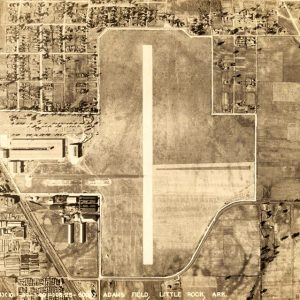 Adams Field
Adams Field  Adams Field Control Tower
Adams Field Control Tower 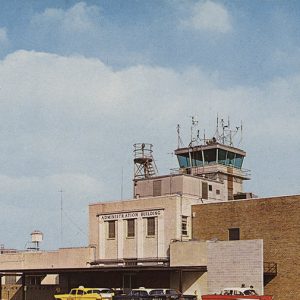 Adams Field Control Tower and Administration Building
Adams Field Control Tower and Administration Building 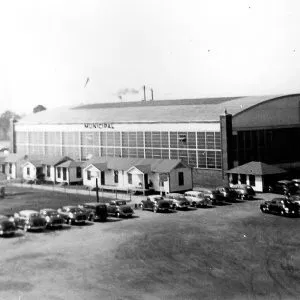 Adams Field Municipal Hangar
Adams Field Municipal Hangar  Adams Field Terminal
Adams Field Terminal 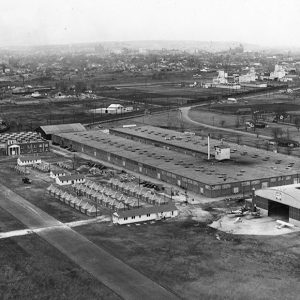 Adams Field, 1942
Adams Field, 1942  George Geyer Adams
George Geyer Adams 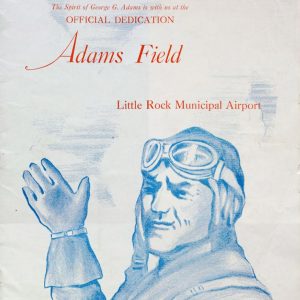 Dedication Program
Dedication Program 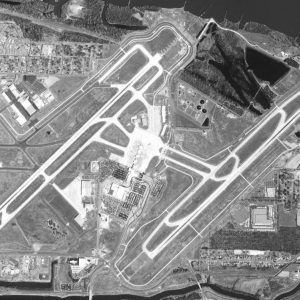 Little Rock Airport
Little Rock Airport 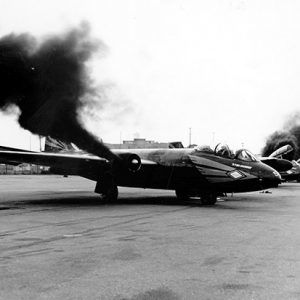 RB-57 Engine Startup
RB-57 Engine Startup  James Rodgers
James Rodgers 



Comments
No comments on this entry yet.